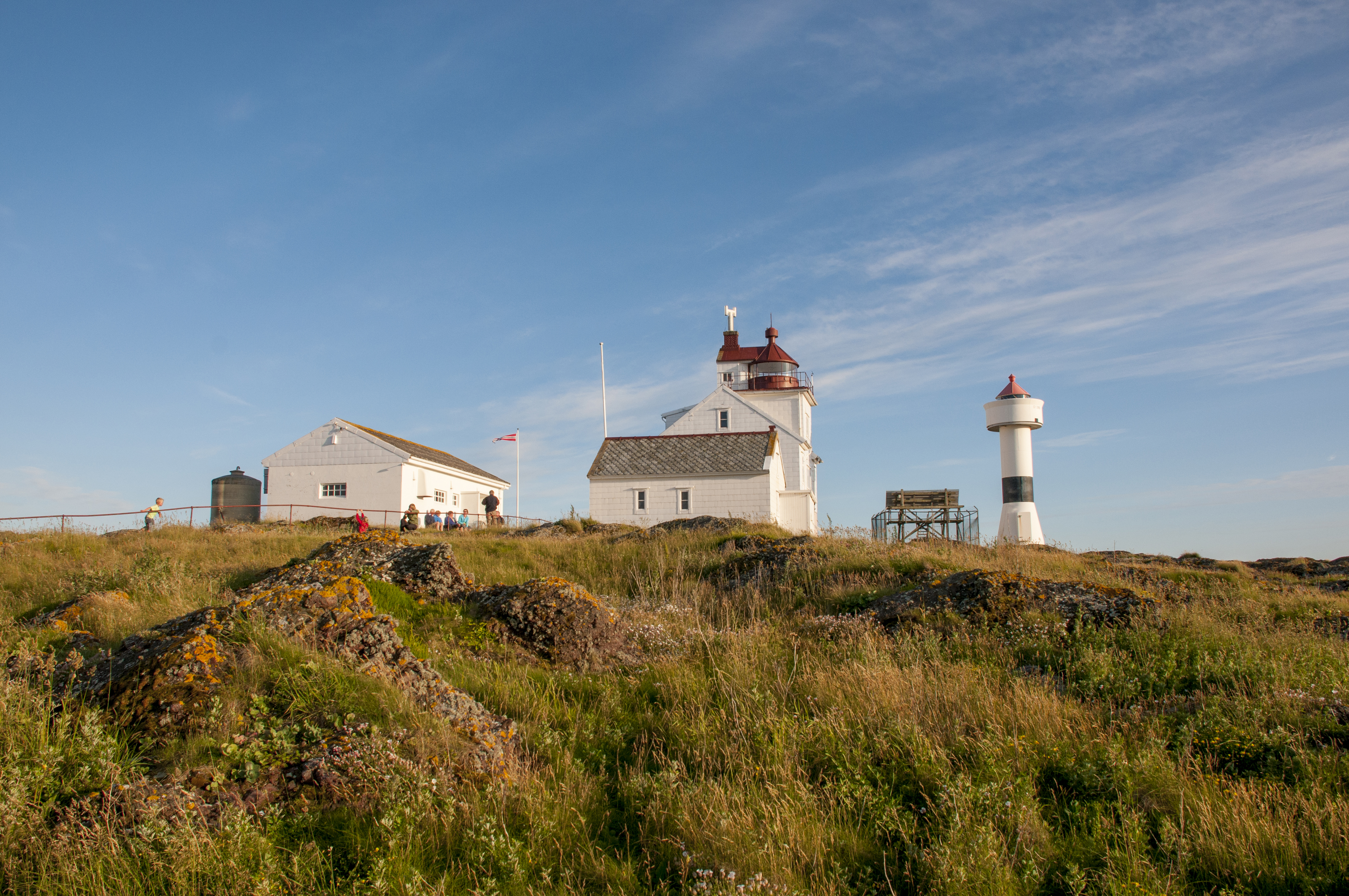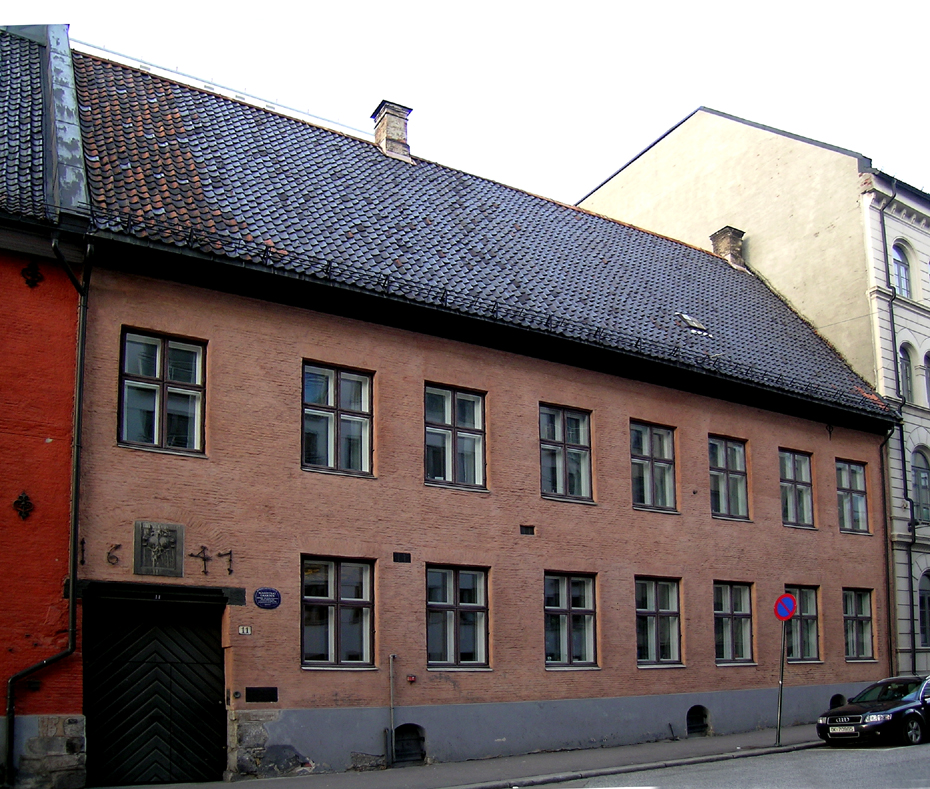|
Nyholmen Lighthouse
Nyholmen Lighthouse (, formerly called ''Bodø fyr'') is a coastal lighthouse in Bodø Municipality in Nordland county, Norway. It is located on the extreme southwestern tip of a small island (connected to the mainland by a causeway) in the northern part of the harbour for the town of Bodø. The light sits atop a tall white, fiberglass tower. The light sits at an elevation of above sea level. It flashes white, red, or green light (depending on direction), occulting once every six seconds. History The original lighthouse was built in 1875 and it consisted of a tall octagonal cast iron tower attached to the front corner of a stone, white, -story keeper's house. That light was discontinued in 1907 when a new tower was built closer to the southwestern tip of the island. The new light was automated on the top of a concrete tower. The old lighthouse was transferred to the Society for the Preservation of Ancient Norwegian Monuments in 1987. In 2017, the old 110-year-old concre ... [...More Info...] [...Related Items...] OR: [Wikipedia] [Google] [Baidu] |
Nordland
Nordland (; , , , ) is one of the three northernmost Counties of Norway, counties in Norway in the Northern Norway region, bordering Troms in the north, Trøndelag in the south, Norrbotten County in Sweden to the east, Västerbotten County to the south-east, and the Atlantic Ocean (Norwegian Sea) to the west. The county was formerly known as ''Nordlandene amt''. The county administration is in the Bodø (town), town of Bodø. The remote Arctic island of Jan Mayen has been administered from Nordland since 1995. In the southern part of the county is Vega Municipality, Vega, listed on the UNESCO World Heritage Site list. Districts The county is divided into traditional districts. These are Helgeland in the south (south of the Arctic Circle), Salten in the centre, and Ofoten in the north-east. In the north-west lie the archipelagoes of Lofoten and Vesterålen. Geography Nordland is located along the northwestern coast of the Scandinavian Peninsula in Northern Norway. Due to t ... [...More Info...] [...Related Items...] OR: [Wikipedia] [Google] [Baidu] |
Concrete
Concrete is a composite material composed of aggregate bound together with a fluid cement that cures to a solid over time. It is the second-most-used substance (after water), the most–widely used building material, and the most-manufactured material in the world. When aggregate is mixed with dry Portland cement and water, the mixture forms a fluid slurry that can be poured and molded into shape. The cement reacts with the water through a process called hydration, which hardens it after several hours to form a solid matrix that binds the materials together into a durable stone-like material with various uses. This time allows concrete to not only be cast in forms, but also to have a variety of tooled processes performed. The hydration process is exothermic, which means that ambient temperature plays a significant role in how long it takes concrete to set. Often, additives (such as pozzolans or superplasticizers) are included in the mixture to improve the physical prop ... [...More Info...] [...Related Items...] OR: [Wikipedia] [Google] [Baidu] |
Buildings And Structures In Bodø
A building or edifice is an enclosed structure with a roof, walls and windows, usually standing permanently in one place, such as a house or factory. Buildings come in a variety of sizes, shapes, and functions, and have been adapted throughout history for numerous factors, from building materials available, to weather conditions, land prices, ground conditions, specific uses, prestige, and aesthetic reasons. To better understand the concept, see ''Nonbuilding structure'' for contrast. Buildings serve several societal needs – occupancy, primarily as shelter from weather, security, living space, privacy, to store belongings, and to comfortably live and work. A building as a shelter represents a physical separation of the human habitat (a place of comfort and safety) from the ''outside'' (a place that may be harsh and harmful at times). buildings have been objects or canvasses of much artistic expression. In recent years, interest in sustainable planning and building p ... [...More Info...] [...Related Items...] OR: [Wikipedia] [Google] [Baidu] |
Lighthouses In Nordland
A lighthouse is a tower, building, or other type of physical structure designed to emit light from a system of lamps and lenses and to serve as a beacon for navigational aid for maritime pilots at sea or on inland waterways. Lighthouses mark dangerous coastlines, hazardous shoals, reefs, rocks, and safe entries to harbors; they also assist in aerial navigation. Once widely used, the number of operational lighthouses has declined due to the expense of maintenance and the advent of much cheaper, more sophisticated, and more effective electronic navigational systems. History Ancient lighthouses Before the development of clearly defined ports, mariners were guided by fires built on hilltops. Since elevating the fire would improve visibility, placing the fire on a platform became a practice that led to the development of the lighthouse. In antiquity, the lighthouse functioned more as an entrance marker to ports than as a warning signal for reefs and promontories, unlike many moder ... [...More Info...] [...Related Items...] OR: [Wikipedia] [Google] [Baidu] |
List Of Lighthouses In Norway
The following is a sortable, but partial list of active and some decommissioned Lighthouses in Norway, lighthouses along the Norwegian coastline. The sequence number follows the convention of listing lighthouses from the coastal border in the south with Sweden around the coast and north to coastal border with Russia. Lighthouses See also * Lists of lighthouses and lightvessels * Lighthouses in Norway References * External links * {{Lighthouses in Europe Lists of lighthouses, Norway Lighthouses in Norway, * Norway transport-related lists, Lighthouses Lists of buildings and structures in Norway, Lighthouses ... [...More Info...] [...Related Items...] OR: [Wikipedia] [Google] [Baidu] |
Lighthouses In Norway
The coast of Norway is long and there have been a total of 212 lighthouses along it, but no more than 154 have ever been operational at the same time. The first, Lindesnes Lighthouse, opened in 1655; the newest Lighthouse, Anda Lighthouse, was finished in 1932. The first lighthouses were private operations, but in 1821 the government made the Channel and Harbor Inspector responsible for lighthouses in Norway. A dedicated Lighthouse Administration was set up in 1841. The lighthouses are today mostly automated and since 1974, run by the Norwegian Coastal Administration. Two lightvessels had been operated along the Norwegian coast. "Enigheden" off Ålesund from 1856 was replaced with Lepsøyrev Lighthouse in 1879, and "Ildjernsflu" moored off Nesodden from 1914 until it was scrapped in 1968. This list, while not complete, is sorted by location along the shipping lane from the border with Sweden in the south to Russia in the northeast. The Norwegian Coastal Administration mai ... [...More Info...] [...Related Items...] OR: [Wikipedia] [Google] [Baidu] |
Society For The Preservation Of Ancient Norwegian Monuments
Society for the Preservation of Ancient Norwegian Monuments () is an organization focused on conservation preservation in Norway. The Society was founded in 1844. The founders were painters, historians, art historians and archeologists, including J. C. Dahl and Joachim Frich. Nicolay Nicolaysen became chairman in 1851 and from 1860 was the association antiquarian. The purpose of the association is to protect and preserve buildings, churches and other forms of cultural heritage. It owns forty structures directly, including the stave churches at Borgund stave church, Borgund, Urnes stave church, Urnes, Hopperstad stave church, Hopperstad and Uvdal stave church, Uvdal. The Society has 18 county branches and 37 local branches in the counties. The branch structure resembles the counties of Norway, county structure of Norway, except that Oslo and Akershus are together, Møre and Romsdal is split into Sunnmøre, Nordmøre and Romsdal, and the town of Røros (town), Røros is a division of ... [...More Info...] [...Related Items...] OR: [Wikipedia] [Google] [Baidu] |
Cast Iron
Cast iron is a class of iron–carbon alloys with a carbon content of more than 2% and silicon content around 1–3%. Its usefulness derives from its relatively low melting temperature. The alloying elements determine the form in which its carbon appears: Cast iron#White cast iron, white cast iron has its carbon combined into an iron carbide named cementite, which is very hard, but brittle, as it allows cracks to pass straight through; Grey iron, grey cast iron has graphite flakes which deflect a passing crack and initiate countless new cracks as the material breaks, and Ductile iron, ductile cast iron has spherical graphite "nodules" which stop the crack from further progressing. Carbon (C), ranging from 1.8 to 4 wt%, and silicon (Si), 1–3 wt%, are the main alloying elements of cast iron. Iron alloys with lower carbon content are known as steel. Cast iron tends to be brittle, except for malleable iron, malleable cast irons. With its relatively low melting point, g ... [...More Info...] [...Related Items...] OR: [Wikipedia] [Google] [Baidu] |
Norway
Norway, officially the Kingdom of Norway, is a Nordic countries, Nordic country located on the Scandinavian Peninsula in Northern Europe. The remote Arctic island of Jan Mayen and the archipelago of Svalbard also form part of the Kingdom of Norway. Bouvet Island, located in the Subantarctic, is a Dependencies of Norway, dependency, and not a part of the Kingdom; Norway also Territorial claims in Antarctica, claims the Antarctic territories of Peter I Island and Queen Maud Land. Norway has a population of 5.6 million. Its capital and largest city is Oslo. The country has a total area of . The country shares a long eastern border with Sweden, and is bordered by Finland and Russia to the northeast. Norway has an extensive coastline facing the Skagerrak strait, the North Atlantic Ocean, and the Barents Sea. The unified kingdom of Norway was established in 872 as a merger of Petty kingdoms of Norway, petty kingdoms and has existed continuously for years. From 1537 to 1814, Norway ... [...More Info...] [...Related Items...] OR: [Wikipedia] [Google] [Baidu] |
Octagon
In geometry, an octagon () is an eight-sided polygon or 8-gon. A '' regular octagon'' has Schläfli symbol and can also be constructed as a quasiregular truncated square, t, which alternates two types of edges. A truncated octagon, t is a hexadecagon, . A 3D analog of the octagon can be the rhombicuboctahedron with the triangular faces on it like the replaced edges, if one considers the octagon to be a truncated square. Properties The sum of all the internal angles of any octagon is 1080°. As with all polygons, the external angles total 360°. If squares are constructed all internally or all externally on the sides of an octagon, then the midpoints of the segments connecting the centers of opposite squares form a quadrilateral that is both equidiagonal and orthodiagonal (that is, whose diagonals are equal in length and at right angles to each other).Dao Thanh Oai (2015), "Equilateral triangles and Kiepert perspectors in complex numbers", ''Forum Geometricorum'' 15, ... [...More Info...] [...Related Items...] OR: [Wikipedia] [Google] [Baidu] |
Occulting Light
A light characteristic is all of the properties that make a particular somewhat navigational light identifiable. Graphical and textual descriptions of navigational light sequences and colours are displayed on nautical charts and in Light Lists with the chart symbol for a lighthouse, lightvessel, buoy or sea mark with a light on it. Different lights use different colours, frequencies and light patterns, so mariners can identify which light they are seeing. Abbreviations While light characteristics can be described in prose, e.g. "Flashing white every two seconds", lists of lights and navigation chart annotations use abbreviations. The abbreviation notation is slightly different from one light list to another, with dots added or removed, but it usually follows a pattern similar to the following (see the chart to the right for examples). * An abbreviation of the type of light, e.g. "Fl." for Flashing, "F." for Fixed. * The color of the light, e.g. "W" for White, "G" for Green, "R" ... [...More Info...] [...Related Items...] OR: [Wikipedia] [Google] [Baidu] |







